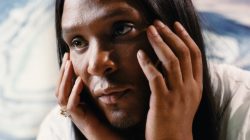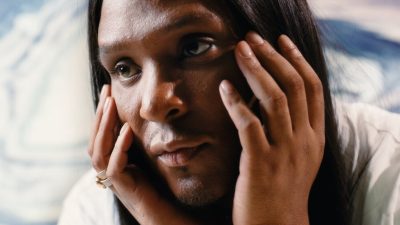In the Metropolitan Opera’s new production of “El Niño,” which reimagines the story of Jesus’ birth and early childhood, there are singing and dancing Virgin Marys, Marys of the land and sea; there’s an Indigenous Mary, a Tropical Mary, a Golden Mary.
For the costume designer Montana Levi Blanco, differentiating this flock of Virgins was just one challenge in bringing to life this new vision of the composer John Adams and the director Peter Sellars’s eclectic Y2K-era oratorio, which draws just as liberally from Latin American poetry and mystic hymns as it does from the New Testament. In the director Lileana Blain-Cruz’s vision, the action takes place across multiple “planes.” It could be a lot to take in.
Thankfully for Mr. Levi Blanco, 39, he has developed something of a shorthand while working with Ms. Blain-Cruz, whom he has known since he was an M.F.A. student at the Yale School of Drama. The pair have collaborated several times, including on “The Skin of Our Teeth,” for which Mr. Levi Blanco won a Tony Award in 2022.
In the case of “El Niño,” painterly scenery by the set designer Adam Rigg evokes the natural environment. And because the chorus is onstage for much of the performance, the question became, What to do with these five dozen singers? The solution: Turn them into flora.
Mr. Levi Blanco developed four versions of the choral costume, all in the same shade of avocado green, that could be adapted to individual chorus members. If a singer wanted long sleeves or a crop top, say, or pants instead of a skirt, the costumes could easily be tweaked.
“Each one is a leaf,” he said of the variation. “Each leaf is different.”
“El Niño” was first performed in Paris in 2000. But Ms. Blain-Cruz’s “El Niño,” probably the most fully realized production of the work ever staged (most previous versions have had minimal set design), takes a more global view. According to Mr. Levi Blanco, the creative team found inspiration in the stories — and clothing — of migrants from not only Central and South America, but also Cambodia, Indonesia and Congo.
The costume for the singer whom this production calls Mary of the Land (the soprano Julia Bullock), one of its two singing Marys, draws on what the designer described as a unity in silhouette that exists in Indigenous cultures across the world. “There’s usually a skirt, a blouse and then some kind of covering that can be used in a lot of ways,” Mr. Levi Blanco said. That might be a shawl in the Caribbean, a scarf in Southeast Asia or a serape in Mexico, but the basic elements are the same.
“I just wanted to honor, kind of, this old but very familiar silhouette,” he said.
Land Mary’s visual counterpart, Mary of the Sea (the mezzo-soprano J’Nai Bridges), will be easily distinguished from the teal- and blue-clad “sea migrants” she appears with through an unexpected palette. In her greenish-yellow skirt and matching floral bodice, Mr. Levi Blanco said, “we’ll always know it’s her.”
Three more Marys, portrayed by dancers rather than singers, occupy what the show calls the iconic plane. These more ethereal Marys have more elaborate costumes than their singing counterparts — supersize silhouettes, ornate headdresses, intricate detailing — that more directly evoke religious iconography.
According to Mr. Levi Blanco, a crucial part of this production was taking women who aren’t often reflected in Christian lore at all and putting them front and center.
“I think it was inevitable that our interpretation of ‘El Niño’ would also include people who look like us,” said the designer, who is half Black and half Mexican.
With her sunburst headpiece and shimmering gown, Golden Mary is probably the most traditional of the Marys whom audiences will encounter onstage, suggesting Catholic statuary of the Spanish Golden Age. Mr. Levi Blanco suspects that Tropical Mary, with her iridescent shawl and ropes of pearls, might have been most meaningful for Ms. Blain-Cruz, who is of Haitian and Puerto Rican descent. “That was a Mary that she grew up with,” he said. But for him, Indigenous Mary had the greatest resonance.
Growing up evangelical Christian in New Mexico, Mr. Levi Blanco had an up-close view of the way that Christianity could merge with Native American and Mexican cultures — not just religious traditions, but also aesthetic ones.
Blanketed in floral motifs of beads and sequins, Indigenous Mary is “all about nature,” the designer said. Even her oversize lace crown, which was initially inspired by traditional Oaxacan headdresses, eventually came to remind Mr. Levi Blanco more of a shell. A lustrous abalone finish completed the look.
Mr. Levi Blanco said that his grandmother Stella, who ran a business making lampshades and was half Yaqui Indian, was an important template for Indigenous Mary. Although she died as “El Niño” was coming together, her grandson felt her presence throughout the production. “Fringe, beads, all this stuff that I grew up playing with in her workshop, is still an active daily part of my life,” Mr. Levi Blanco said.
“She was my Indigenous Mary, you know?” he added.
Sumber: www.nytimes.com












